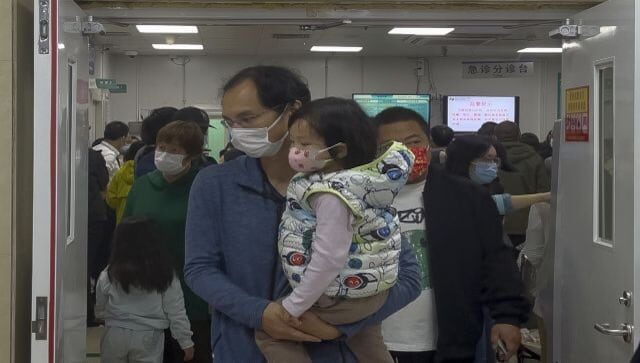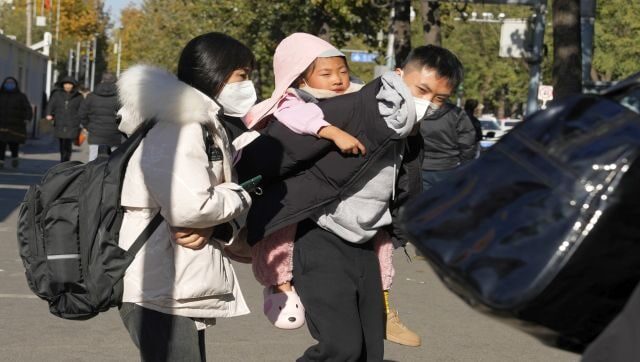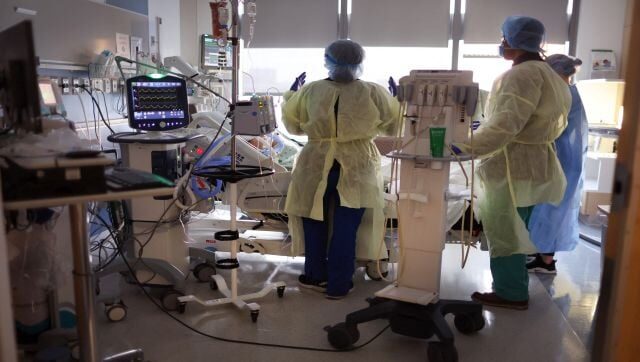
And it seems that this strain of bacterial pneumonia now dubbed White Lung Syndrome is also rearing its ugly head in the United States. Doctors in parts of Massachusetts and Ohio are reporting a spike in child pneumonia cases similar to the outbreak spreading in China.
We take a closer look at the cases in the US, and examine if it has a link to China. Moreover, we also see how this strain is also being detected in other countries and if there's a larger risk.
White Lung Syndrome outbreak in US
Warren County, in Ohio, has recorded a spike in hospitalisations with children reporting to have the mysterious pneumonia, which has been dubbed as the 'white lung syndrome', since August.
According to health officials in Warren County, there have been 142 paediatric cases of the condition. The officials said on Wednesday, "Not only is this above the county average, it also meets the Ohio Department of Health definition of an outbreak."
Meanwhile, in western Massachusetts, physicians are seeing "a whole lot" of walking pneumonia, a milder form of the lung condition, which is being caused by a mixture of bacterial and viral infections.
The average age of the affected children is eight, with the youngest being three-years-old. Health officials have noted that the most common symptoms associated with the outbreak of "white lung syndrome" are a cough, fever and fatigue.
Officials have noted that neither outbreak is being caused by a novel pathogen and not all of the pneumonia cases are being caused by the same infection. Experts say a mixture of several seasonal bacterial and viral bugs are hitting at once, putting pressure on hospitals.
Some medical experts opine that children's immunity has been weakened by lockdowns, mask-wearing and school closures during the pandemic — leaving them more vulnerable to seasonal illnesses.
Dr Scott Roberts, an infectious diseases expert at Yale School of Medicine, Connecticut, was one of those who believed that the cases were linked to weakened immunity in children. He told DailyMail.com: "This is probably a recurrence of known pathogens that are hitting us a bit harder because of low immunity to them."
Reacting to the situation, Warren County Health District said in a statement, "As we approach the holiday season, when many of us will be gathering together with family and friends, please remember to take necessary precautions to protect your health.
"Wash your hands, cover your cough, stay home when ill and stay up to date on vaccines."
When questioned about the outbreak, a source at the Centers for Disease Control and Prevention (CDC) was quoted as saying that nationally, "nothing is out of the ordinary."
"Nothing is flagging out of the ordinary, but we are continuing to monitor," he said.
Dr Amesh Adalja, an infectious disease expert from Johns Hopkins University in Maryland told DailyMail, "I would caution against extrapolating one Ohio county to a country of 330 million people."
'White lung syndrome' outbreak across the world
Prior to the US, the Netherlands and Denmark also said they were recording mysterious spikes in pneumonia cases, many of which are being attributed in part to mycoplasma.
According to the Netherlands Institute for Health Services Research (NIVEL), 80 out of every 100,000 children between age 5 and 15 were treated for pneumonia last week. Similarly, cases among those in the age group between ages 4 and under were also on the rise, jumping from 124 to 145 per 100,000.
Danish health chiefs have also noted that pneumonia cases have reached 'epidemic' levels. Denmark's Statens Serum Institut (SSI) revealed rates have tripled over the past five weeks and warned more kids will be struck down this winter.
Sweden, Switzerland and Singapore have also recorded more than 100 cases each from April through September, according to a study published last week in The Lancet Microbe.
China's neighbouring countries like Taiwan, Nepal and India have also sounded an alert over the pneumonia cases, with authorities stepping up vigilance.

Over the past fortnight, hospitals Beijing and other megacities in China are overflowing with children suffering pneumonia or similar severe ailments. Earlier called 'walking pneumonia' because it wasn't serious enough to land you in hospital, parents have been rushing their little ones to medical facilities with this ailment.
Doctors have noted that microbe causing the surge in hospitalisation of children is Mycoplasma pneumoniae, which causes M pneumoniae pneumonia, or MPP. Discovered in 1938, the microbe was believed for decades to be a virus because of its lack of a cell membrane and tiny size, although in fact it is an atypical bacterium. These unusual characteristics makes it invulnerable to most antibiotics (which typically work by destroying the cell membrane).
The surge in cases also prompted a reaction from the Chinese authorities. The Chinese health ministry spokesperson Mi Feng was quoted as saying that efforts were underway to bolster healthcare provisions. Additionally, the recommendation to wear masks and maintain social distancing was also made.
Commenting on the same, Maria Van Kerkhove, acting director of the WHO department of epidemic and pandemic preparedness and prevention, said the rise in respiratory illness was in line with "what most countries dealt with a year or two ago".




Quote: "Wash your hands, cover your cough, stay home when ill and stay up to date on vaccines."
Dr. Roberts of Yale, says it is probably low immunity. The CDC says it is nothing so far.
When a vax has been recommended for children who had no risk of "covid 19", you should question was the vax given to the "white lung" children? Why? Because the vax has led to turbo cancers and autoimmune diseases and damage to the immune system.